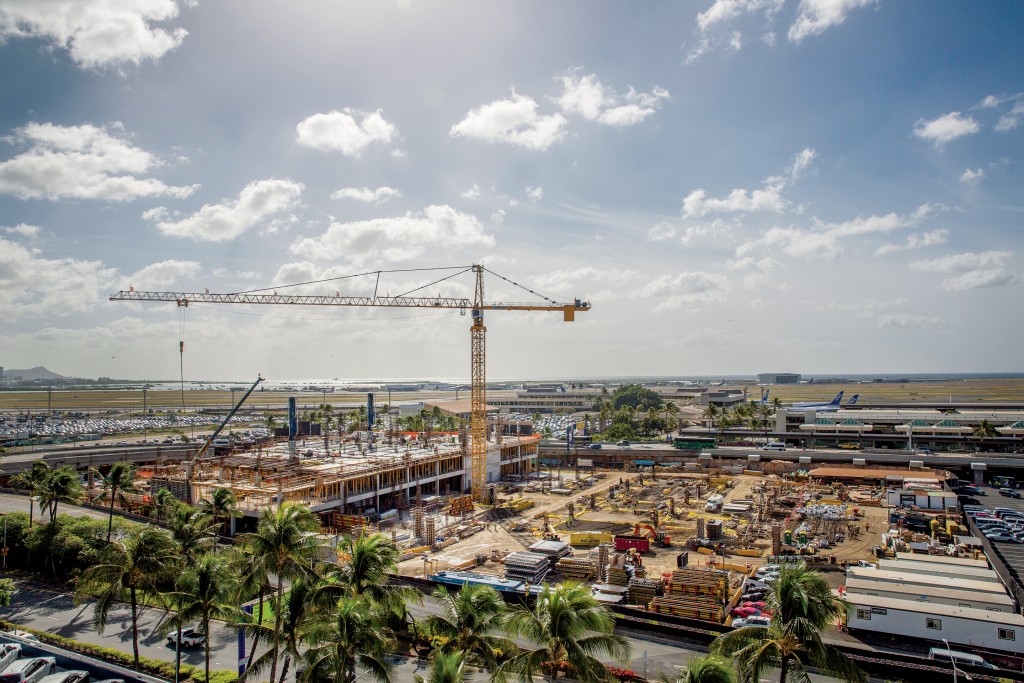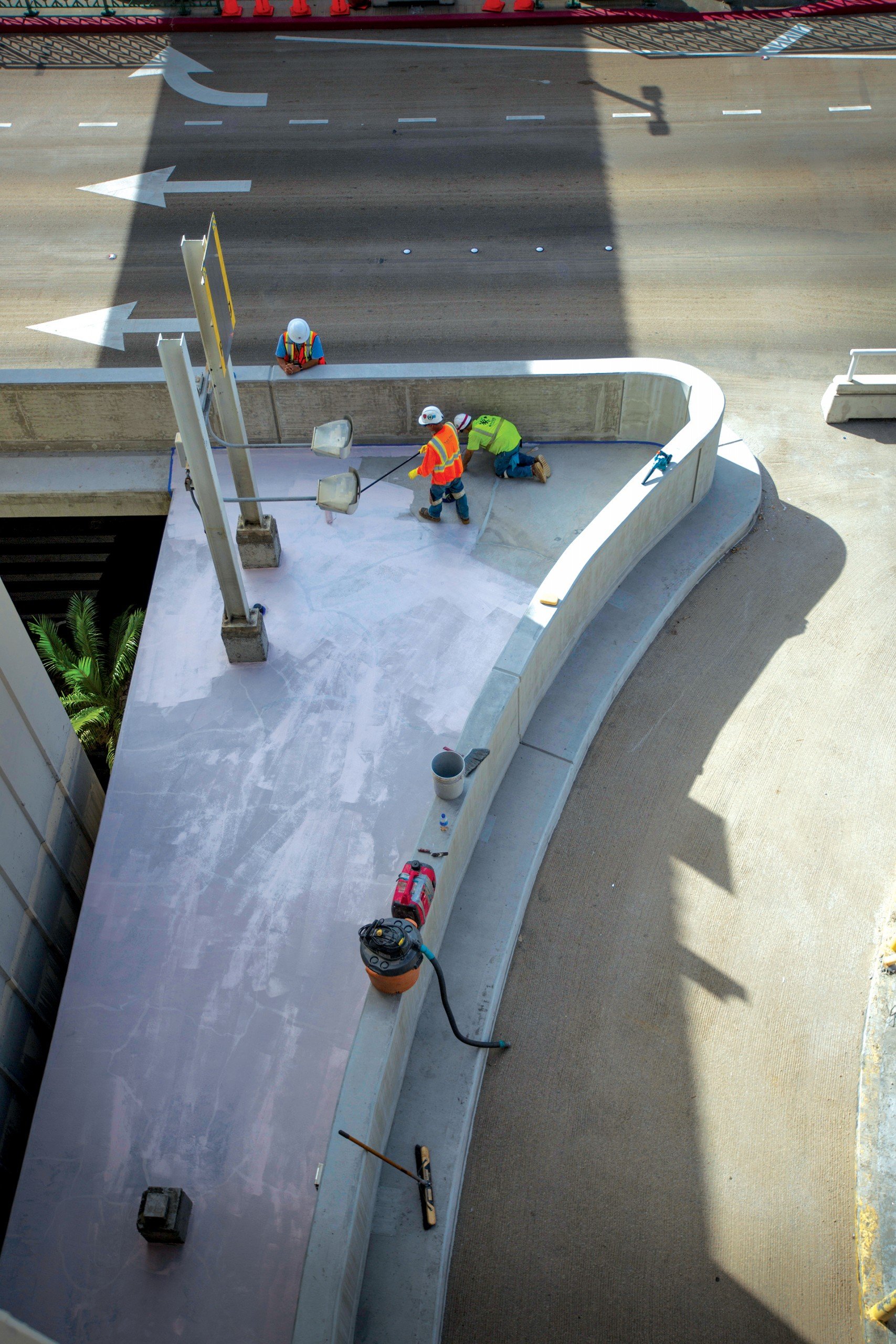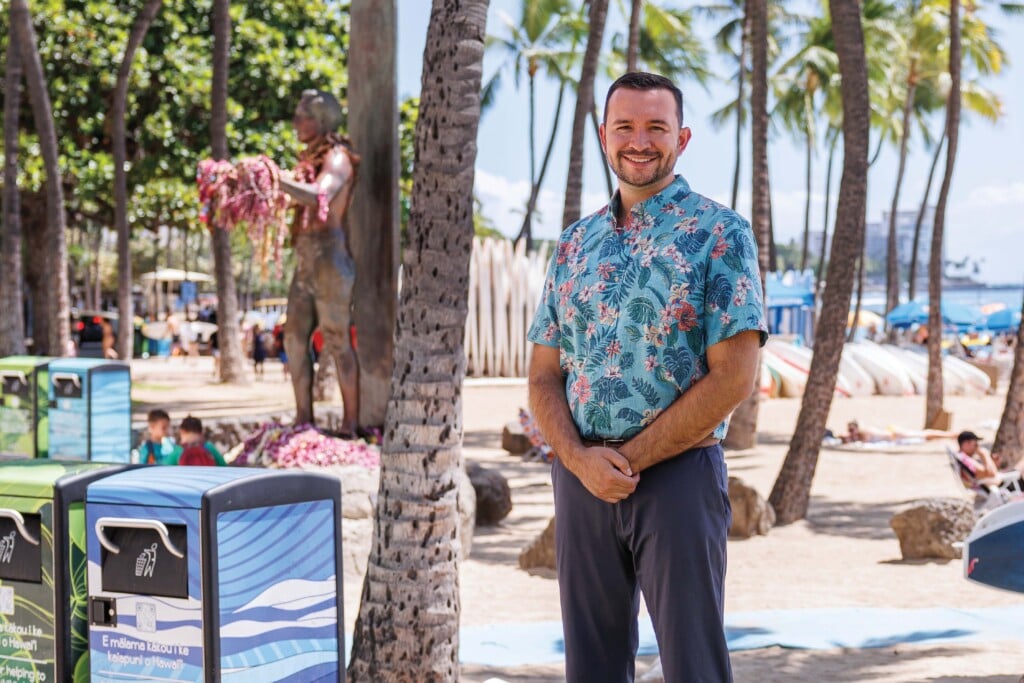Project Delays at Hawaii’s Airports

MOVING FORWARD
The vision of Fuchigami and his predecessor was to move forward with the modernization program. Since November, that vision has been in the hands of interim Transportation Director Jade Butay. Fuchigami is now administrative director in the governor’s office, where he hopes to coordinate the priorities of the different state entities involved in the modernization program. “Hopefully it’ll help us to expedite the process,” he says.
Modernization projects have to be done in a particular order and Hawaiian Airlines’ new cargo and maintenance facility was a major early step, Dunkerley says. “That should have been done within a couple of years of when we started this program. The fact that it wasn’t completed until (October) shows how far behind it is.”
A contract was originally given to build the hangar in 2010. Work stalled at the end of 2015 when issues with the general contractor arose. Hawaiian Airlines took over the project in late 2016 and identified nearly 3,700 issues with the unfinished facility. Most issues involved incomplete work that the state had already paid for and the contractor had marked as complete; others involved substandard work that had to be corrected. The project was ultimately finished $35 million over budget.
“An incoming administration is often – not always – but is often reluctant to pick up the work that the previous administration has done. So at least in one case, between the Lingle administration and the Abercrombie administration, we took a giant step backward.”
Mark Dunkerley, President and CEO, Hawaiian Airlines
Now that the facility is complete, other improvements to the Honolulu airport can begin. Hawaiian’s old cargo and maintenance facility can be torn down and certain taxiways widened to allow access to the Mauka Concourse. Aoki says the old low-rise commuter terminal also has to be demolished to build the new concourse, which will add gates that can hold either 11 narrow-body aircraft or six new wide-body aircraft. The Honolulu airport covers an area bigger than Waikīkī, but doesn’t have any more unused land, so something has to be removed before anything new can be built, Fuchigami says.
The modernization program was intended to make the airports more functional. For instance, Hawaiian Airlines, the biggest carrier, has control of 14 gates at the Inouye International Airport, but flies out of the Interisland Terminal, Ewa Concourse, Central Concourse, and, on rare occasions, the Diamond Head Concourse. Fuchigami says the state’s intent was to gather most of Hawaiian Airlines’ operations into the Mauka Concourse.
HTA’s Szigeti says this modernization program is important because the Inouye International Airport must accommodate all types of aircraft, such as the new A380 double-decker jet that All Nippon Airways will use to carry 500 passengers between Honolulu and Tokyo starting in spring 2019.
As of Oct. 30, 2017, almost $1 billion had been spent on the Hawaii Airports Modernization Program, says Tim Sakahara, spokesman for the state Transportation Department.

Workers resurface an area outside the Overseas Terminal at Honolulu’s Inouye International Airport. | Photo: David Croxford
NEW OVERSIGHT
Only a few states operate their airports, including Alaska, Maryland and Hawaii. Those run by an authority or corporation include two main airports in the Washington, D.C.-area – Reagan National and Dulles International – which are run by the Metropolitan Washington Airports Authority.
A state airports governance study in 2016 found that an independent airport authority would be the best entity to oversee Hawaii’s 15 airports. The study found that such authorities are more responsive, have improved management continuity by disconnecting appointments from political terms, and have airport-specific procurement and personnel policies that decrease lead-times and enable the hiring of talented employees. Miyasato says the modernization program has demonstrated that a state government entity doesn’t have the flexibility and nimbleness that an airport corporation would provide – and that airports need.
For the past two years, the state Transportation Department and the Airlines Committee of Hawaii have pushed for legislation that would authorize the establishment of such a corporation. Inouye introduced the most recent bill in the Senate, which called for a board with nine members appointed by the governor plus a CEO appointed by the board to lead the corporation. Board members would be required to have relevant business and management experience and can meet year round. The corporation would be placed within the state Transportation Department only for administrative purposes. The bill was left in conference at the end of last year’s legislative session; Inouye plans to revisit it in the 2018 session.
Fuchigami says the board would make a big difference in how things are run. “They’re going to be able to meet every single month and go over all projects, all hirings, anything. … The fact that you’d be able to communicate and be able to go in and work with this board, I think, makes a tremendous difference in terms of what you’re trying to accomplish,” he says. “Because the board members would be on staggered terms, you have that continuity moving forward.”
Szigeti says the Hawaii Tourism Authority supports the bill because the tourism industry needs an improved airport infrastructure. “We think the corporation would address the needs of the airport users, the businesses and the airlines in a responsive and timely manner,” he says, “so we are in support of that.”
“Where are the checks and balances for a board? And we have seen these boards in action again whether it’s HART, whether it’s HTA, whether it’s HCDA or the BOR. Who holds them accountable at some point for their decisions? And when the decisions go wrong, what happens?”
Donna Mercado Kim, State Senator
State Sens. Donna Mercado Kim and Brian Taniguchi are part of the minority of state lawmakers who voted against airport corporation bills. Kim says the corporation’s board would only add another layer of bureaucracy because its members and CEO would still have to rely on transportation officials for information. And no one would have the authority to hold the board accountable.
“Where are the checks and balances for a board?” she asks. “And we have seen these boards in action again whether it’s HART, whether it’s HTA, whether it’s HCDA or the BOR. Who holds them accountable at some point for their decisions? And when the decisions go wrong, what happens? They fire their executive director, which is what they’ve done in the past, they fire or let go of the HART director, but is it the director that’s making the decisions or is it the board that’s making the decisions?”
However, she agrees something needs to be done with the airport system, which she says lacks transparency, efficiency and accountability – as demonstrated by the delays and quality-control issues with the Hawaiian Airlines cargo and maintenance facility.
Taniguchi says his concern is that a corporation would be able to do things that are outside of public oversight. A corporation isn’t needed because there’s accountability in the current management system with legislators providing oversight. “As statewide elected officials, I think there’s probably a better sense of what the community as a whole is thinking and would like to see in terms of improvements or in terms of what happens at the airports,” he says.
Dunkerley says part of the problem is that the people who are paying for the airports – the users, such as the airlines, concessionaires and restaurants – don’t have influence over the people who are running them. “If you get professional airport management in and if thought is put into who the right board members should be to represent the community’s interest as well as continuing to seek user involvement, the people who actually pay the bills, I think that’s a far stronger system of accountability than today,” he says.
While Fuchigami supports an airport corporation, he says the state has accomplished some things: Two consolidated car rental facilities are being built – that’s about $700 million worth of construction; the Mauka Concourse is moving forward; and the state was able to reopen the Kona International Airport Federal Inspection Service facility, which allowed international flights to resume.
“We’ve been able to accomplish a lot in this short period of time, and we’ve been able to move things, but I guess our contention is that we can move things along faster and get more done,” he says.





